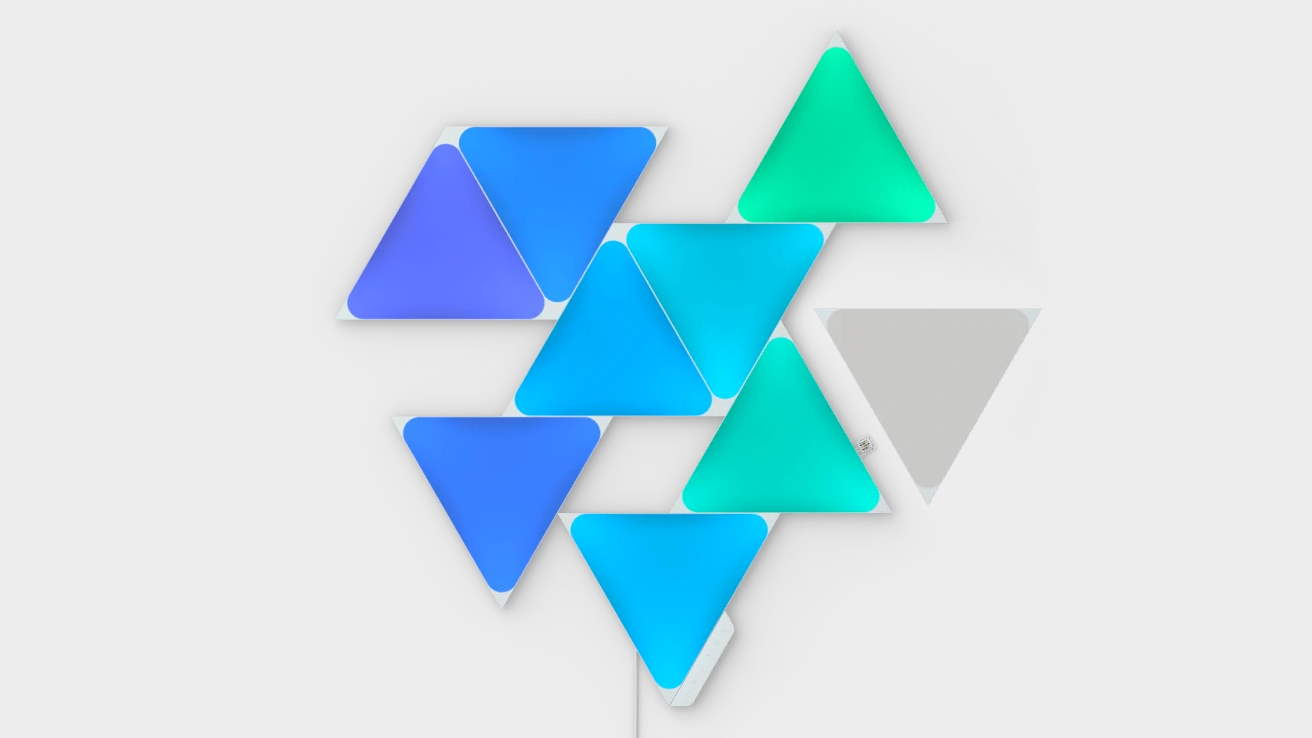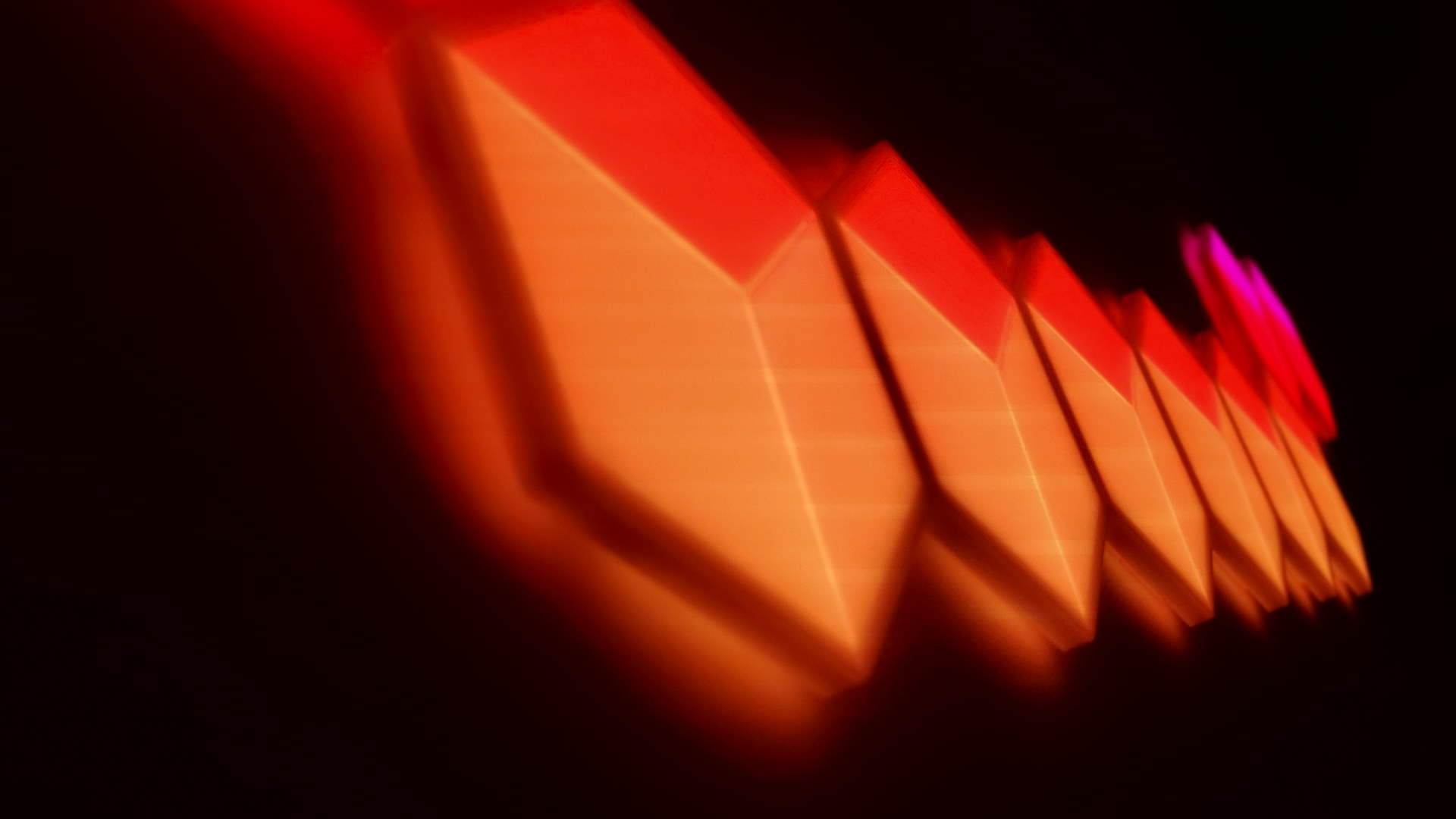You're not a true PC gamer until you've convinced your significant other to RGB the home you share
I've played the new Nanoleaf black triangles off against the traditional white panels and Govee's hexagonal lights, all just to upgrade my home.

While the 'gamer' aesthetic previously meant sharp angles and over-enthusiastic, preposterously proportioned artwork adorning our hardware, now it's all about the RGB. If a piece of technology isn't haloed by myriad addressable RGB LEDs then it's going to have a hard time pretending it's been designed for gaming.
And you don't have to be a technology journalist with a couple decades of experience to know that tech with coloured lights brightening it up will always perform far better than something that isn't using extraneous power just to get lit.
Even in places where you wouldn't expect RGB illumination to be useful, or even desirable, we've seen it added. Headsets, for example, where you can't even see what's going on around your ears now come RGB'd up. And SSDs, too, because they don't get hot enough all by themselves.
And so, when I was considering how to upgrade my humble home, there was really only one option. After all, I was never going to actually paint a wall myself or do some sort of interior design that required a permanent solution. No, I wanted to overclock my house in the only way I know how, with slabs of RGB lighting on my walls.
Even in my bedroom where a thoroughly pink aesthetic has been pushed by forces greater than mine. Somehow, I've managed to squeeze a little gamer gear into the boudoir, with the express permission of my partner. What a world we live in.
Nanoleaf is arguably the biggest name in RGB home lighting panels, though Philips has got its own claims to homebrew light shows via its Hue lightbulbs. But, thanks to streamers and YouTubists haloing themselves with Nanoleaf strips and panels, it's become the go-to company for your RGB PC backdrop.
Nanoleaf is the established player and has recently celebrated its 10th anniversary with a set of matte black light panels. But there's also upstart, Govee, which has only been going since 2017, but has already got itself a bit of a following. Y'know, with the RGB contrarians.
The biggest gaming news, reviews and hardware deals
Keep up to date with the most important stories and the best deals, as picked by the PC Gamer team.

The bedroom wall panel is the gateway drug for RGB lighting the entire house.
I have, therefore, put the traditional white Nanoleaf Shapes triangular panels, up against its new black triangles and the hexagonal Govee Glide Hexa Pro panels in a battle for the ages. Well, a battle to see which one gets the okay from my long-suffering partner and is actually allowed to go on the wall of our bedroom.
Y'see the bedroom wall panel is the gateway drug for RGB lighting the entire house, allowing me to expand into the harder stuff: sticking a set of panels up in our front room and the family room, too.
"Instead of buying a new lamp for the bedside table," I suggest, "how about we go minimal and mount some panels onto the wall?"
I will admit, I expected some push back, not a willing collaborator. And yet here I am with addressable RGB panels lighting up different room in my home.
The different kits are similarly priced, with the Nanoleaf Shapes Triangle Starter Kit is $200 (in nine panel trim as I've been playing with), while the Govee Glide Hexa Pro kit (with ten panels) is on sale for $175 right now. Though I will say, if you do get hooked, the price of expanding these kits is high. Another three panels for from either Govee or Nanoleaf comes in at $70. Ouch.




In the end we've actually settled on the Govee Glide Hexa Pro panels for prime position in the bedroom, which is maybe a surprising choice given the popularity of the Nanoleaf panels. But the reasons are more about usability than aesthetics. Although the hexagonal panels, with their split sections of addressable RGB lighting, do allow you to create more interesting 3D effects than with the more uniform Nanoleaf triangles.
But it was the ease of setting them up, and the fact there is a very obvious, very physical 'on' button that makes them more like a traditional lamp. If just waaaay more expensive. The Nanoleaf panels do have buttons, too, so you don't have to rely on turning them on via the smartphone app, but it's nowhere near as intuitive and is positioned on the primary panel that feeds power to the whole group.
Because they're on the light panel themselves, the Nanoleaf buttons have been designed to be invisible. Which makes actually hitting the right one, and not the random disco lighting button, a bit of a lottery. The Govee button is along the power cable, away from the panels, and is just a single, physically depressed button that even my 3-year-old can find at 6am to wake us up.
I also really appreciated the design aid from the Govee app, which allows you to create the wall display you want virtually, and will then help you arrange the physical panels, with the connectors threaded into the right places, to weave your pattern on the wall. Using the removable sticky pads, it's a simple thing to get your light show up and running.



It's also easy to get them connected to your network so you can actually control them via your app. I'm running a Google Nest router at home, which has served me well over the years and, while the Govee panels will only connect via a 2.4GHz network, not a 5GHz one, they had no trouble with the mixed signals of the Nest setup.
You see, Google doesn't have discrete connections for 2.4GHz and 5GHz, which is normally not a problem as most apps and devices are smart enough to deal with that if they require one or the other.
Not so with Nanoleaf.
I know it's a one-time setup kinda deal, and that once you are in place you shouldn't need to worry about going through the trials of hooking your lights into your home network, but connecting the Nanoleaf panels to the Nest router almost had me in tears.
In fact, I had to put it down, take a couple hours breather, and return afresh once I'd calmed down enough not to put my fist through a still unlit triangular panel.
The issue is that Nanoleaf's connection isn't smart enough to just train itself on the 2.4GHz network and needs manual intervention in order to convince it not to continuously butt its head against the 5GHz wall and fail to connect. And what form did this manual intervention take? Walking down the garden with my mobile phone, for the very specific amount of time the app allowed for connection, until I got far enough away from my router the 5GHz signal wasn't available and it defaulted to 2.4GHz instead.
It was a frustrating time. And one I cared not to repeat. Except it was the same with both the white and black panels. Though by the time I'd jumped through the hoops with the white version I did at least know the measures it would take to connect the black anniversary ones up.

It seems obvious thinking about it, but the matte black Nanoleaf panels are far dimmer than the white ones.
The setup is one thing, but what about the actual lights? Well, I will say I do actually prefer the lighting on the Nanoleaf panels. Though only the white ones.
But what about those fancy 10th anniversary black Nanoleaf panels? Well, honestly, they're a bit disappointing. Disappointingly dull compared with either the vibrant Govee or the traditional white Nanoleaf panels, and I'm afraid I barely ever bother turning them on.
It seems obvious thinking about it, but the matte black Nanoleaf panels are far dimmer than the white ones, and you end up with a much more subdued effect from them. The traditional white Nanoleaf triangles, however, can be blazing bright and really light up a room.
Once connected the Nanoleaf app setup is really good, too. Where the Govee software shows you how to plumb the panels into each other to create the display you want, the Nanoleaf app is more user oriented. You plug the panels into one another, and the app reflects the way you've arranged them yourself.
And you can download and upload patterns, too. There are heaps of user-created and official Nanoleaf lighting patterns that can change colours or react to sound in different ways, and it allows you to keep things fresh if you fancy a change.
The Govee app, however, has a fair few different presets you can use—and they are really effective—but as far as I've been able to tell, that's what you're stuck with unless you want to start designing your own. That makes it feel a lot more limited, and the Govee software doesn't feel as slick and intuitive as the Nanoleaf one, either.



Both Govee and Nanoleaf can hook into your home control network, though, as in either your Google Assistant, Apple HomeKit, or Amazon Alexa thingies. And that means you don't have to spend time messing around with individual apps to light your home. Assign a room to each, and then you can just tell your phone or smart speaker to turn on the lights, turn them green, or have a disco replete with a pulsing light show wherever you wish.
Though obviously voice control is still prone to errors, and I have turned the bedroom lights on in the middle of the night, waking my partner into a blinding panic, when I'd actually just meant to turn off the lights downstairs.
Because yes, while Govee may have won the battle for the bedroom, with its ease of setup and physical controls, the white Nanoleaf panels have won a place in my heart, and my home office, thanks to the actual lighting effects and the fact I can switch it up when I inevitably get bored with the glowing jungle theme I'm currently rocking.

Dave has been gaming since the days of Zaxxon and Lady Bug on the Colecovision, and code books for the Commodore Vic 20 (Death Race 2000!). He built his first gaming PC at the tender age of 16, and finally finished bug-fixing the Cyrix-based system around a year later. When he dropped it out of the window. He first started writing for Official PlayStation Magazine and Xbox World many decades ago, then moved onto PC Format full-time, then PC Gamer, TechRadar, and T3 among others. Now he's back, writing about the nightmarish graphics card market, CPUs with more cores than sense, gaming laptops hotter than the sun, and SSDs more capacious than a Cybertruck.